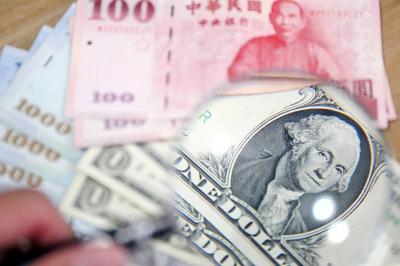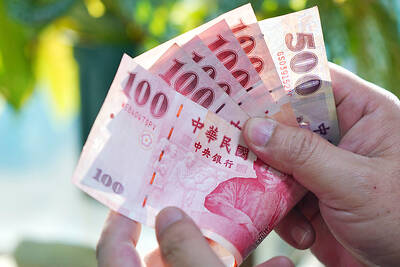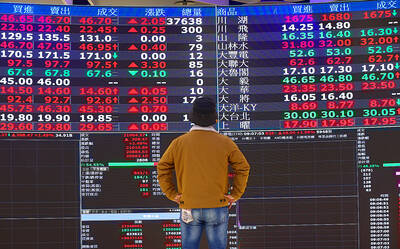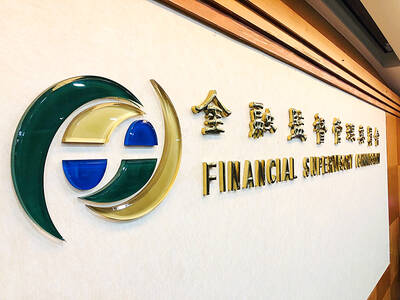From Brasilia to Seoul, finance ministers are obsessing over the US dollar. Its decline could have great impact on the global financial system.
Yet rather than asking Secretary of the Treasury John Snow if the US still favors a "strong dollar," officials should look to Asia.
Regardless of where US President George W. Bush administration wants the dollar to go, Asians have co-opted the strong-dollar policy -- and they aren't about to let go of it.
The US, meanwhile, has stolen Asia's devalue-your-way-to-growth tactic. While Snow isn't saying so, the US seems quite happy with the dollar's 10 percent drop against the yen and nearly 16 percent drop versus the euro during the past year.
All this policy co-opting amounts to a risky tug of war over the dollar.
So long as its decline is orderly, the US is happy to see exports become cheaper. But Asian central banks are stepping up dollar sales to pull the dollar the other way, fearing stronger currencies will slam growth.
Who will win this tug of war? It's anyone's guess, but the fact it's taking place offers a couple of hints about the global economic outlook.
For one thing, a dollar crisis probably won't come as soon as feared. Asian central banks, already voracious buyers of US Treasuries, would merely increase purchases to stabilize the dollar. Asia isn't known for cooperating on region-wide polices, but it agrees a weaker dollar isn't an option.
For another, a necessary adjustment in global markets is being delayed.
Even those in the deficits-don't-matter camp must wonder how long the US can live this far beyond its means. The record budget deficit is one thing, but the gaping current account deficit is a clear and present danger.
The current account deficit is more than 5 percent of GDP, a record. Unless the dollar weakens, it will continue widening, making the imbalance bigger and more dangerous as well.
It would help if Asia just left the dollar alone.
For all the good news in the region -- surging equities, booming growth and emerging middle classes -- it's stuck in a developing-nation mentality. It has been almost a decade since a rebound in Asia coincided with a global one. That, coupled with improving domestic demand, means this Asian recovery is on reasonably solid footing.
It's not just China, which grew an astounding 9.9 percent in the fourth quarter from a year earlier. Thailand and Vietnam are booming, and Hong Kong, Malaysia, Singapore and Taiwan are confounding skeptics.
South Korea, no longer in recession, is expected to grow 3 percent this year. Even deflation-plagued Japan is on the mend after 13 years in and out of recession.
While big challenges and risks remain, Asians are less concerned about a huge banking crisis in their biggest economy.
It stands to reason, then, that traders are bidding up Asian currencies. If governments are to be taken at their word -- that exchange rates should reflect economic fundamentals -- currencies should rise. Yet an exorbitant amount of time and energy still goes into holding down exchange rates.
This obsession is ironic given the dollar's role in the 1997 Asian crisis. During the 1990s, the US hogged a greater share of capital than it deserved. By acting like a huge magnet, the dollar-buying boom deprived economies like Indonesia, South Korea and Thailand of much needed investment.
It also led to risky imbalances. One was allowing an already huge US trade imbalance to widen. Another was attracting mountains of capital from Japan by way of the so-called ``yen-carry trade.'' Negligible interest rates in Japan had investors borrowing cheaply in yen and reinvesting the money in higher-returning assets like US Treasuries. Many still employ the trade.
Asians would love to see the dollar return to its mid-1990s heights. Yet efforts to boost it are leading to new asset bubbles.
The Bank of Japan alone sold a record ?20.1 trillion(US$198 billion) last year, buying US Treasuries with the proceeds. It pushed some US rates down to Japan-like levels -- US two-year notes now yield 1.60 percent.
The biggest irony is that the US could win either way at Asia's expense. If Asia lets the dollar drop, US exports and growth will get a boost and the current account bubble will narrow. If Asia continues boosting the dollar and buying Treasuries, US interest rates stay low and the US can fund ever-bigger deficits.
The former outcome would be better for Asia. While it bristles at the idea of the world's largest economy devaluing its way to prosperity, Asia's fortunes are closely tied to the US If US growth booms and consumers buy more Asian goods, wouldn't it be worth the short-term pain of stronger local currencies?
It's an end-justifies-the-means situation for Asia. The region's preoccupation with weak currencies makes little sense in the short run and even less in the long run.
All the more reason for Asia to reconsider its tug of war with Washington.

The US dollar was trading at NT$29.7 at 10am today on the Taipei Foreign Exchange, as the New Taiwan dollar gained NT$1.364 from the previous close last week. The NT dollar continued to rise today, after surging 3.07 percent on Friday. After opening at NT$30.91, the NT dollar gained more than NT$1 in just 15 minutes, briefly passing the NT$30 mark. Before the US Department of the Treasury's semi-annual currency report came out, expectations that the NT dollar would keep rising were already building. The NT dollar on Friday closed at NT$31.064, up by NT$0.953 — a 3.07 percent single-day gain. Today,

‘SHORT TERM’: The local currency would likely remain strong in the near term, driven by anticipated US trade pressure, capital inflows and expectations of a US Fed rate cut The US dollar is expected to fall below NT$30 in the near term, as traders anticipate increased pressure from Washington for Taiwan to allow the New Taiwan dollar to appreciate, Cathay United Bank (國泰世華銀行) chief economist Lin Chi-chao (林啟超) said. Following a sharp drop in the greenback against the NT dollar on Friday, Lin told the Central News Agency that the local currency is likely to remain strong in the short term, driven in part by market psychology surrounding anticipated US policy pressure. On Friday, the US dollar fell NT$0.953, or 3.07 percent, closing at NT$31.064 — its lowest level since Jan.

The New Taiwan dollar and Taiwanese stocks surged on signs that trade tensions between the world’s top two economies might start easing and as US tech earnings boosted the outlook of the nation’s semiconductor exports. The NT dollar strengthened as much as 3.8 percent versus the US dollar to 30.815, the biggest intraday gain since January 2011, closing at NT$31.064. The benchmark TAIEX jumped 2.73 percent to outperform the region’s equity gauges. Outlook for global trade improved after China said it is assessing possible trade talks with the US, providing a boost for the nation’s currency and shares. As the NT dollar

The Financial Supervisory Commission (FSC) yesterday met with some of the nation’s largest insurance companies as a skyrocketing New Taiwan dollar piles pressure on their hundreds of billions of dollars in US bond investments. The commission has asked some life insurance firms, among the biggest Asian holders of US debt, to discuss how the rapidly strengthening NT dollar has impacted their operations, people familiar with the matter said. The meeting took place as the NT dollar jumped as much as 5 percent yesterday, its biggest intraday gain in more than three decades. The local currency surged as exporters rushed to